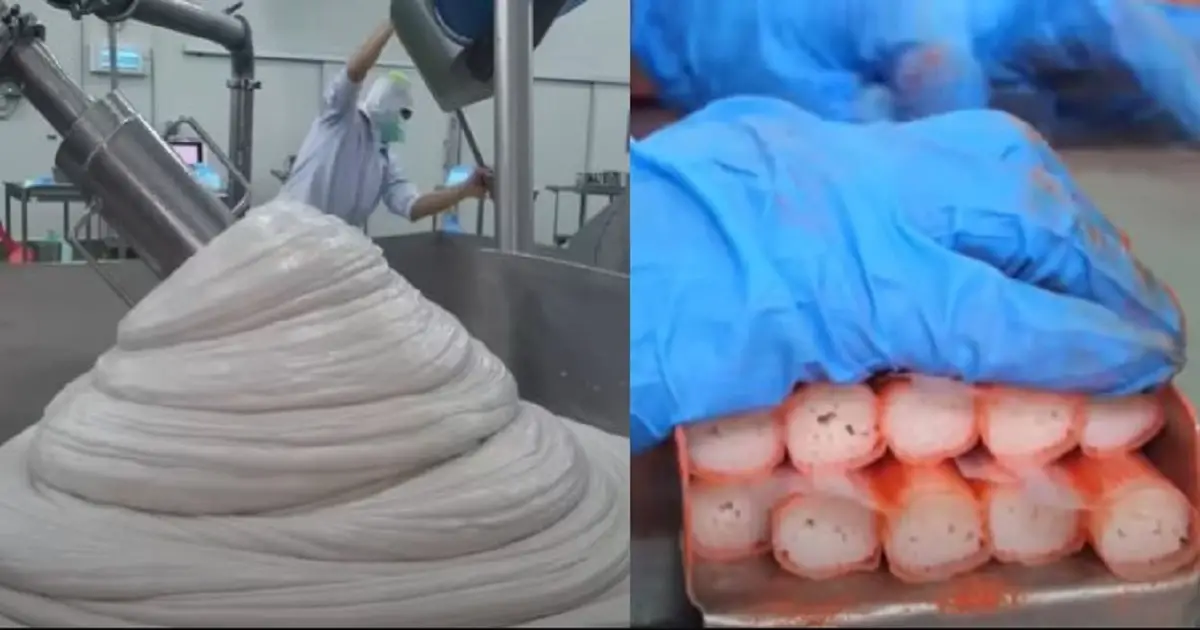People Refuse to Eat Crabsticks Again after Finding out How They’re Made

source: Youtube
Imagine biting into a delicious crabstick, savoring its unique flavor and succulent texture. For many seafood enthusiasts, it’s a go-to snack or ingredient that adds a delightful twist to their meals. However, recent revelations about the manufacturing process behind these popular treats have left some people swearing off crabsticks forever.
Crabsticks, also known as imitation crab or seafood sticks, have been a staple in supermarkets and restaurants for decades. They have gained a loyal following due to their affordability, convenience, and the ability to satisfy cravings for seafood without breaking the bank. But what if I told you that crabsticks aren’t exactly what they seem?

It turns out that the vast majority of crabsticks are not made from actual crab meat. Instead, they are created using a mixture of processed fish called surimi, which is then flavored and shaped to resemble the taste and appearance of crab. Yes, you heard that right—those delightful crabsticks you’ve been munching on are essentially seafood imposters!
The process of making crabsticks starts with grinding fish into a paste known as surimi. This paste is then washed repeatedly to remove any impurities, resulting in a smooth and elastic texture. Afterward, various ingredients, such as starch, sugar, salt, and flavorings, are added to enhance the taste and mimic the flavor profile of real crab.

Once the flavoring is complete, the surimi is shaped into thin sticks and cooked. These sticks are then cooled, packaged, and sent to stores around the world. The final product, although it may resemble crab, is essentially a fish-based creation with an uncanny resemblance to the real thing.
Discovering the truth behind the production process of crabsticks has led many consumers to question their dietary choices. Some feel deceived, having assumed that the crabsticks they consumed were made from genuine crab meat. Others are concerned about the nutritional value and potential health risks associated with consuming heavily processed fish products.
While it’s understandable to feel disappointed or even disgusted by the revelation, it’s essential to keep things in perspective. Crabsticks have been consumed for decades without widespread reports of negative health effects. They remain a popular choice for those seeking an affordable and convenient seafood substitute.

If you find yourself reconsidering your crabstick consumption, fear not! There are plenty of other seafood options available that offer a more authentic experience. Fresh crab, lobster, shrimp, and various other shellfish provide a genuine taste and texture that can’t be replicated by imitation products.
Well, the choice is yours. Whether you decide to give up crabsticks entirely or continue enjoying them as a guilty pleasure, the important thing is to make informed decisions about the food you consume. Stay curious, explore new flavors, and don’t be afraid to try the real deal—there’s a vast ocean of culinary experiences waiting to be discovered!
